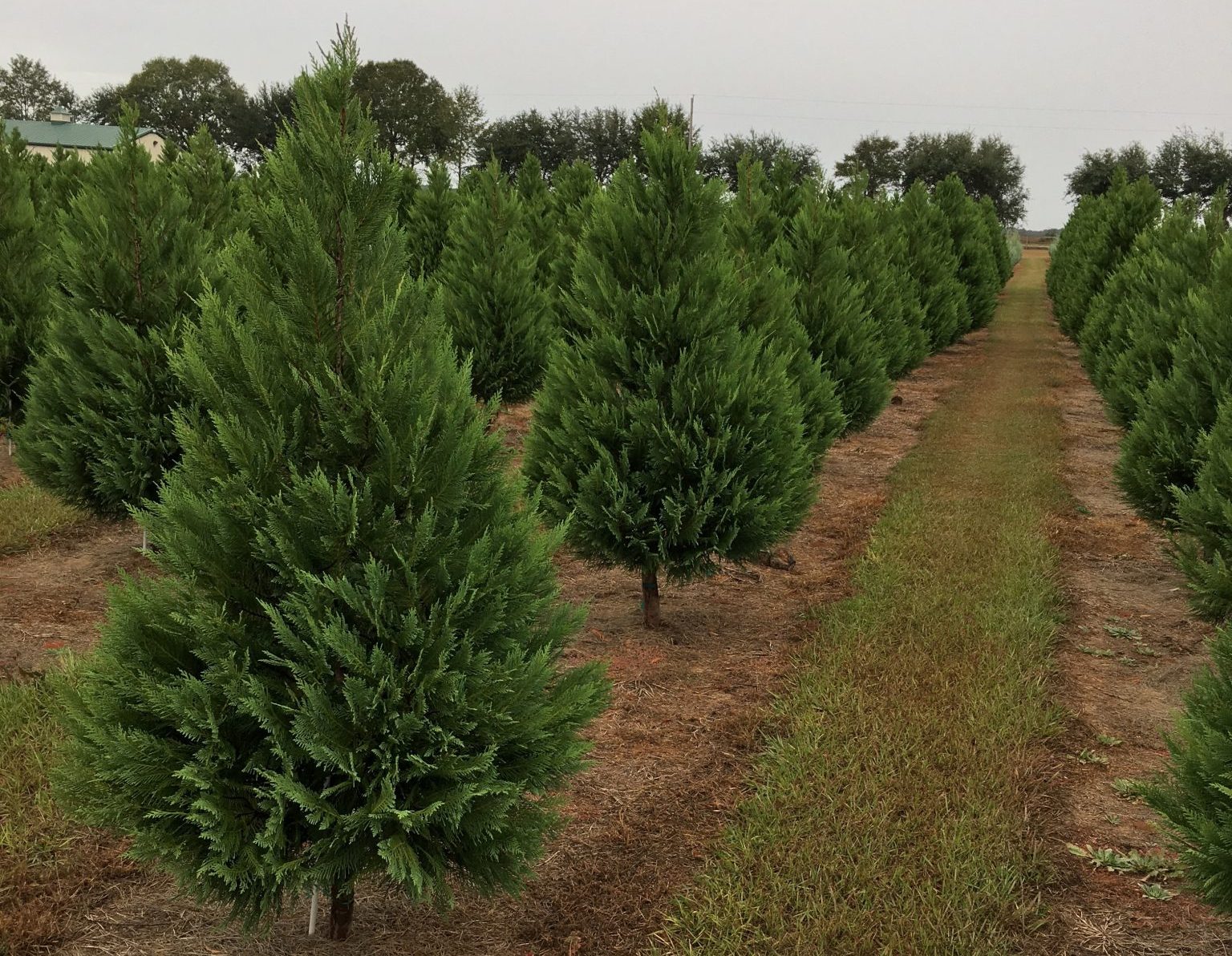Crop Production

Making adjustments to a herbicide program for a Christmas tree farm may lead to big savings. Recently, Extension professionals conducted a survey where a number of growers indicated that they were spraying eight or more times each year. Excellent control can be achieved with four applications each year. The following are some key steps to reducing annual herbicide applications for Christmas tree growers.
Keep it Clean
Maintaining bare ground or a herbicide strip under trees is easier if growers routinely keep their grounds clean. Establish an acceptable threshold before treating. Understand that pre emergent products work better if there is good contact with the ground. The more dead weeds and weed canopy an area has, the less of a chance that the pre emergent product comes in contact with the ground.
Rotate
Weeds can become resistant if the same herbicide is used without rotation. This is the case for some Christmas tree farms in the Southeast, where lack of rotation has led to glyphosate resistant weeds. Consider rotating with glufosinate, a similar nonselective herbicide. You may also consider using a selective herbicide like sethoxydim, which only kills certain grasses.
Understand the Chemical Barrier
Pre emergent herbicides when applied correctly provide a one half inch chemical barrier on top of the soil. Germinating seeds are damaged or killed when they come in contact with the barrier. If the barrier is disturbed or not applied correctly, expect weeds to show up. The cleaner the ground, the better contact the pre emergent will have with the soil and the better the barrier. Mixing pre emergent and post emergent products together is often good idea except in situations where a thick weed canopy is present. Kill back that canopy first so the pre emergent can get to the soil.
Activating Pre Emergent
Read the pesticide label. Almost all pre emergent products require water to activate. Often, the label will list how long before an irrigation or rain event is needed to activate the product. The volume of water needed may range from one half to three fourths of an inch. The sooner a product is activated the better. Because most Christmas tree farms do not have overhead irrigation, applications should be timed before a rain event.
Apply Efficiently
The best way to apply herbicide is by using a flat fan nozzle and spraying a band 16 to 24 inches on each side of the tree. This can be accomplished by maintaining a constant speed and targeting the spray directly around the tree. If walking with a backpack sprayer, 2.5 mph is a good walking speed. A metronome app on your phone can help you stay consistent. For example, 90 bpm is a good brisk pace.
Pick the Right Herbicide
A list of herbicides labeled for Christmas trees can be found in the UGA Extension Pest Management Handbook. See the Forestry and Christmas Trees PDF from UGA Extension. The last four pages deal with Christmas tree weed control. You will see a lot of options for pre emergent products. With all the possible choices out there, here are some answers to a a few questions commonly asked.
What are the standard products used?*
For field nurseries of Christmas trees, Surflan (oryzalin) and maybe Simazine are the primary products because they are the most affordable.
What if growers want to use a new product labeled for Christmas trees?*
There are a lot of new products out there labeled for use on Christmas trees. If growers wanted to build a program with newer options, there are several that would be good choices and could be used to develop a full year long pre emergent program.
Gemini® is a good one to use as an early spring application as it is strong on some cool season broadleafs and spring grasses. Using SureGuard® after that in early summer is good because it has a broad spectrum and can hold up to summer rains and provide control of a broad range of broadleaf weeds. Marengo® is a good late fall application. Any three of these herbicides could be used in almost any order and growers would see excellent results.
What if nutsedge is an issue?*
If Nutsedge is important to address in a grower’s field, substitute either Pennant Magnum or Tower® in as the early summer application. If nutsedge is the number one weed of concern, maybe go with Pennant as it is usually stronger on sedge. If sedge is problematic but a grower also has big problems with grasses and other broadleaf weeds, use Tower® because it will suppress sedges and it is more broad spectrum than Pennant Magnum® in terms of other grasses and broadleaf weeds.
Calibration
Label rates often are confusing and can even discourage growers from wanting to try a new product. If a grower is use to using glyphosate, then they know the rate is given based on volume (e.g. fl. oz. per 100 gals or percent solution).
Most other herbicide rates are given in area-based rate like oz. per acre or per 1,000 ft2. Growers shouldn’t let this scare them. All they need to know is what the output is on their sprayer in gallons per acre (GPA). Alabama Extension professionals can easily help growers figure this out in 15 minutes. Contact a member of the commercial horticulture team for assistance.
*Information provided by Chris Marble, University of Florida weed scientist.
Trade and brand names used in this publication are given for information purposes only. No guarantee, endorsement, or discrimination among comparable products is intended or implied by the Alabama Cooperative Extension System.

